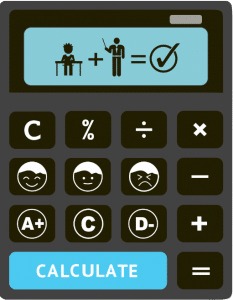Overview
Understanding the concept of “Chance” or “Probability” is an important topic that you will explore in Year 6 Maths. This knowledge will help you make sense of the likelihood or possibility of events occurring in various situations. Whether it’s predicting outcomes, making informed decisions, or understanding uncertainties, probability plays a crucial role in our lives. In this article, we will delve into the world of chance and explore its significance in Year 6 Maths.
Learning Outcomes
After reading this article, you will be able to:
- Define probability or chance and express it as a fraction, percentage, or decimal.
- Calculate the probability of simple events using real-life examples.
- Understand the concept of theoretical probability and its application in practical scenarios.
- Recognize the importance of probability in making predictions and informed decisions.
Probability or Chance
Let’s begin by understanding what probability or chance means. Probability is a way of expressing the likelihood of an event happening. We can think of it as the chance of something occurring. Probability can be expressed as a fraction, a percentage, or a decimal.
For example, when you toss a coin, there are only two possible outcomes: heads or tails. If we assume the coin is fair and unbiased, the chances of getting heads are 1 out of 2, which can be written as \(\frac{1}{2}\), 0.5, or 50%.
Here’s another example. Let’s consider a standard pack of 52 playing cards. If you randomly select a card from the deck, what is the probability of choosing a red “King”? Avoid reading further and think about it for a moment.
There are 2 red “Kings” in the deck (the King of Hearts and the King of Diamonds), and there are 52 cards in total. Therefore, the probability of choosing a red King is \(\frac{2}{52}\), which simplifies to \(\frac{1}{26}\) or approximately 0.038, or around 3.8%.
Notice how the probability of something happening (called an event) is calculated? It’s the number of ways it can happen divided by the total number of possibilities.
Challenge Question:
If a fair coin is tossed twice, what is the probability that it lands on tails both times?
Hint: If a fair coin is tossed twice, there are 4 possible outcomes (or results). Can you enlist them?
Theoretical Probability
In addition to understanding the probability of specific events, it is also important to grasp the concept of theoretical probability. Theoretical probability is based on calculations and predictions rather than actual outcomes.
Imagine you toss a fair coin 50 times. How many times would you expect it to land on heads? Take a moment to think about it.
The theoretical probability of getting heads on a fair coin toss is \(\frac{1}{2}\). Therefore, if we toss the coin 50 times, we would expect it to land on heads approximately 25 times, as \(\frac{1}{2}=\frac{25}{50}\).
Now look at the spinner below. If it is spun 30 times, how many times would you expect it to spin green?
Hint: First, find the probability of spinning green. Write it as a fraction and simplify. Set the fraction in its simplest form equal to a new fraction whose denominator is 30. The numerator of the new fraction is the answer!
Theoretical probability is not limited to coin tosses; it applies to a wide range of events in real life. From weather predictions to sports outcomes, theoretical probability helps us make educated guesses and forecasts based on mathematical models and calculations.
Wrap Up
In conclusion, understanding probability or chance is vital in Year 6 Maths and beyond. It allows us to analyze and interpret the likelihood of events, make informed decisions, and predict outcomes. Whether you’re estimating the chances of winning a game or assessing the probability of an event happening, probability is a powerful tool.
If you need further assistance or have any questions about probability, feel free to contact us. We are here to support your learning journey and help you master Year 6 Maths concepts.






